Raymond Culos: “I Am Canadian-Italian, so ‘Canadian’ Comes First”
Raymond Culos (b. 1936), Vancouver born first-generation Canadian-Italian writer and historian, talks about his Italian connection and his memories of the 1950s.
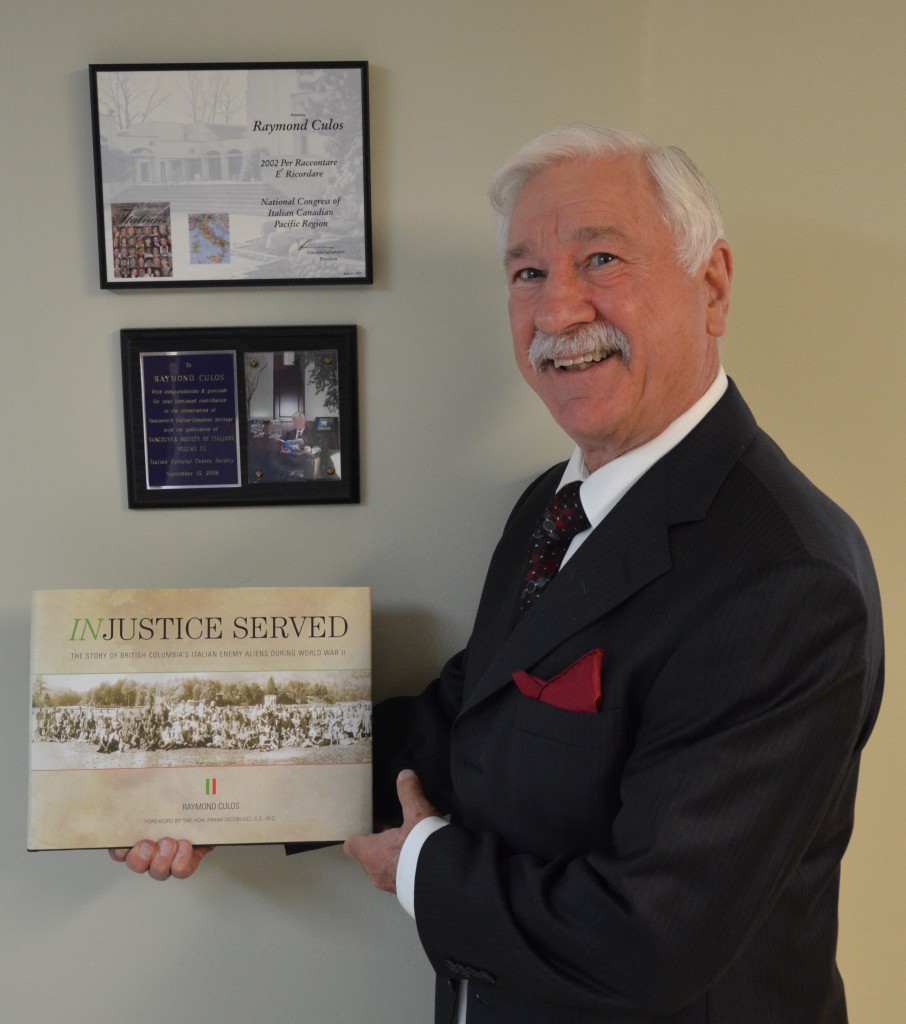
Ana-Maria Gheorghiu: Mr. Culos, what is your connection to the Italian community in Vancouver? You don’t have an Italian-sounding name, which I’m sure you’ve been told before.
Ray Culos: I am very much involved in the societal life of Vancouver’s Italian community. My father was born in northern Italy and my mother’s people came from central-southern Italy. My family members on both sides all of have blue eyes which I believe is not unusual but not typical of Italians. Because my last name sounds more Greek than Italian to many people, I was never associated with being Italian. We did some research, and one of my cousins in Italy surmised that, during the Venetian Empire, Greeks from the island of Corfu were employed or conscripted into the Venetian merchant marine, and it would have been very easy, if anyone didn’t like that work, to jump ship after arriving in Venice. The Culos family originally is from San Giovanni di Casarsa which is located about 50 miles north of Venice.
My people were from little towns and villages. Nobody arrived here from Rome or Venice in those days. But there were exceptions. The successful Italian business people here, like the Aquilini and Bosa families, came in the 1950s as skilled builders and craftsmen. The next generation born here started to move away from the old Strathcona neighbourhood leaving behind some of the old traditions. Some of us were destined to fall in love with non-Italian Canadians and marry outside the ethnic community. When people ask me to describe my origin, I tell them, of course, Italian, but I always add that I am Canadian-Italian, so “Canadian” comes first.
A.M.G.: You have written several several books about the Italian connection in Vancouver. What determined you to do this extensive work? Most people are happy with just their family stories, and don’t go that deep into research.
Ray Culos: My parents were very connected with the Italian community. They both served as presidents of their respective men’s and ladies’ Italian organizations for many years during their 70 year association with the Sons of Italy and the Confratellanza Italo-Canadese societies. Anybody I needed to speak with in the Italian community recognized my name. As far as research is concerned, I have both studied on my own and hired someone in Ottawa to access the archives to obtain information to corroborate my research, whenever possible.
I was thrilled to receive the Confratellanza’s prestigious Canadian-Italian of the Year award for 2005. The honour is given to the person who is determined to have brought pride to the Italian community through his or her community service and/or professional accomplishments. Special emphasis is placed on achievements that enhance the reputation and well-being of Italians generally and of the Vancouver Italian community specifically.
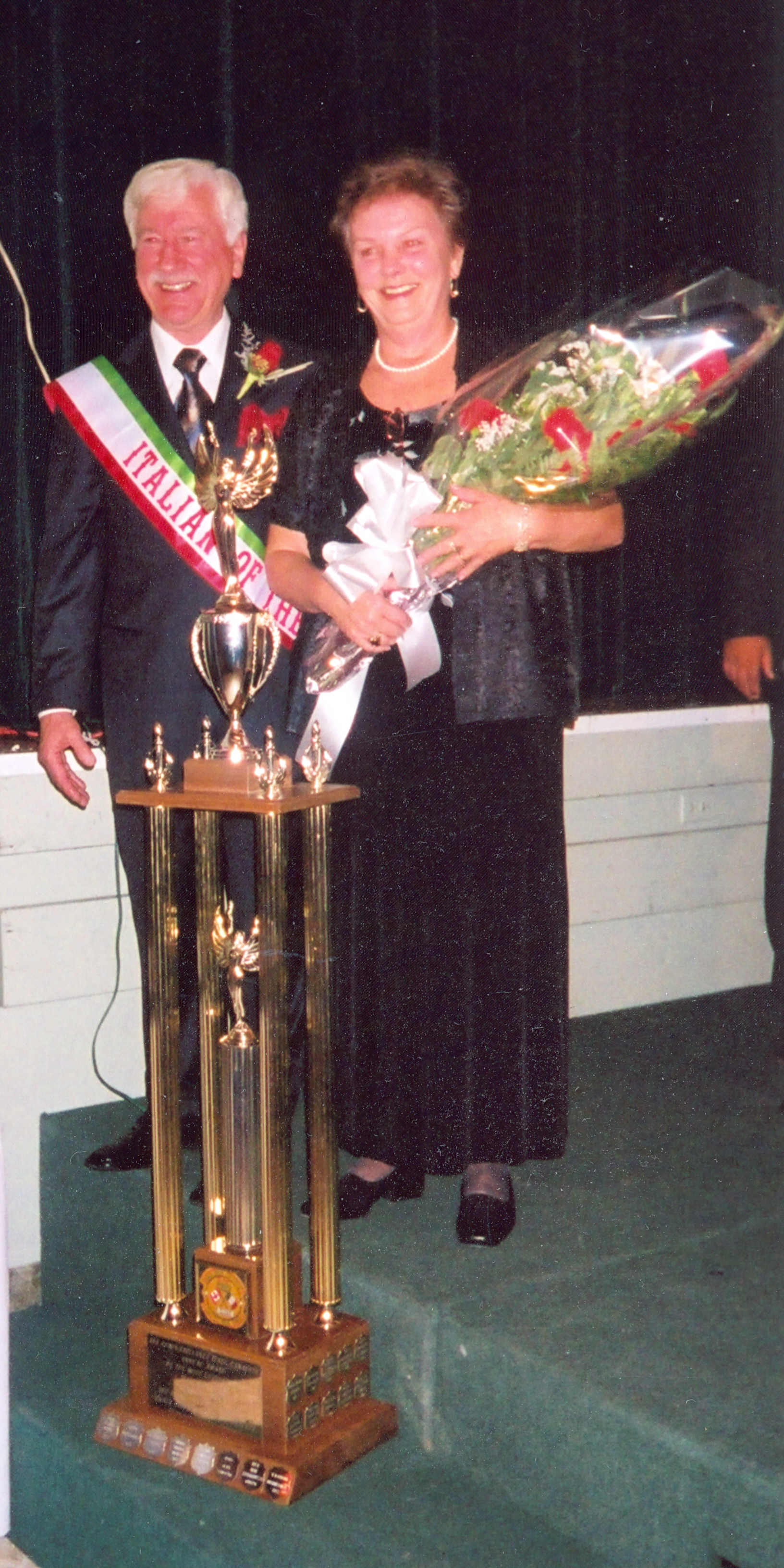
I did this work to honour my parents’ memory and the work that they accomplished for Italians. My dad was an accountant and very meticulous about keeping records; he had dozens and dozens of original pieces of correspondence and numerous period photographs. He also kept a diary during World War II. I used his work, plus my own, and interviewed hundreds of people. I am active today as well; just yesterday, I filed an article with Il Marco Polo, the Italian weekly newspaper that dedicates a page to articles written in English. I’ve been a member of Italian societies for most of my adult life. My father, Marino Culos, wrote a regular column for the local Italian language newspaper in the late 1930s, and I briefly contributed a column for a similar publication in 1978 and ’79.
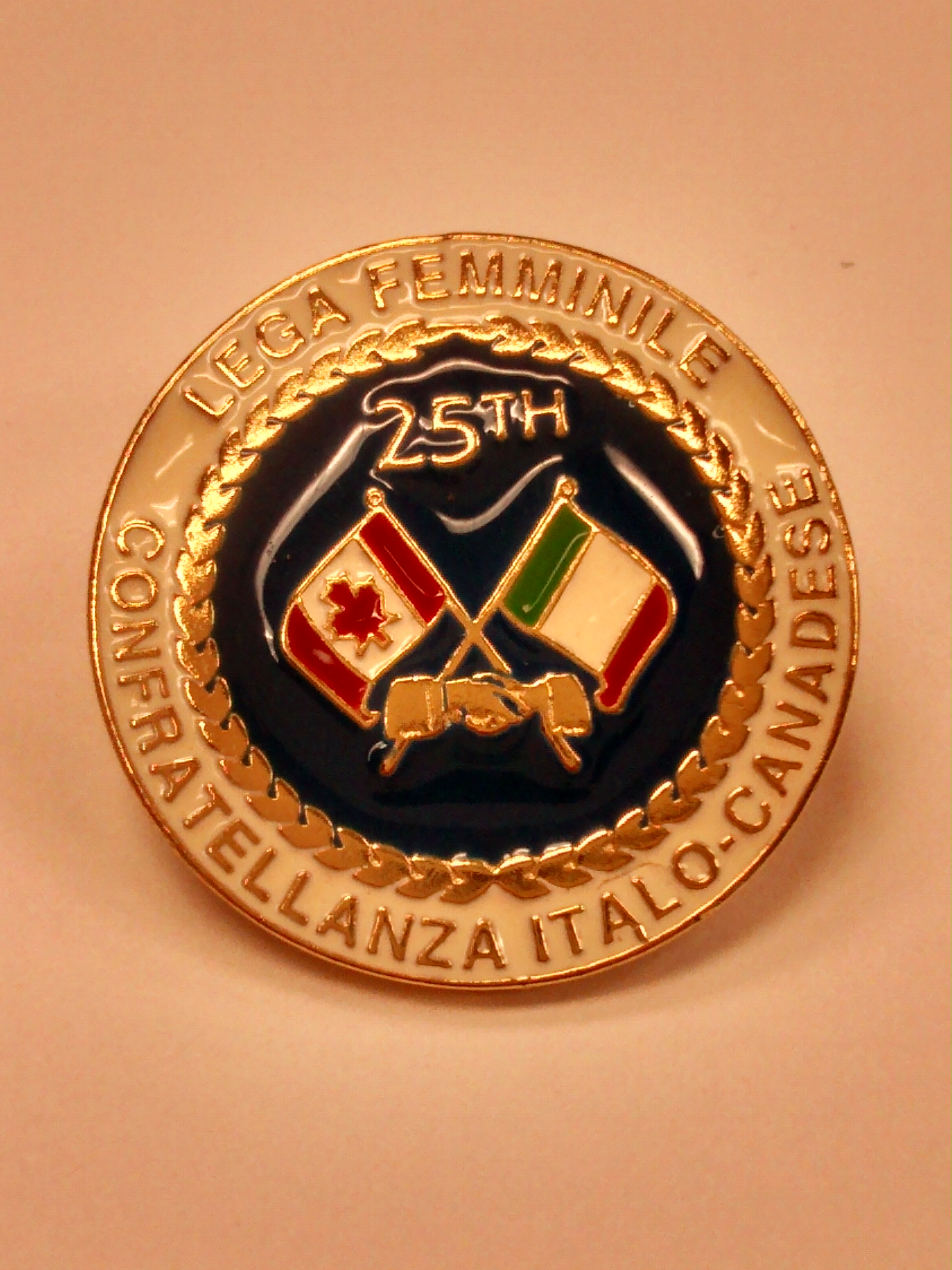
I was also fortunate to be in newspaper management during my career, and I took early retirement to write. My first book, Vancouver’s Society of Italians, was published in 1998, and subsequently four other books. The last one was in 2012. I’m recognized as an historian but I usually qualify that by saying simply that I am a chronicler of the history of Vancouver’s pioneer Italians and their institutions.
I have written extensively about the Italians living in BC who were interned by the government during World War II. Those incarcerated under the Canada War Measures Act (1939) were allegedly charged as fascists or “enemy aliens”, because they were citizens of a belligerent country. (Some of these men did not seek to become British Subjects but rather remained Italian nationals.) The internment of Italians resulted from Italy’s declaration of war against Canada in 1940; the men in Canada who had joined an Italian organization that supported Mussolini and the fascists were rounded up. Although they were not given an opportunity to be represented by counsel, a number of them were interned at Kananaskis, Alberta and Petawawa, Ontario. There weren’t very many across the country, but it’s a very interesting story, and because a lot of people didn’t know about it, there was great interest shown in the work I did. There was definitely more racial motivation when it came to the internment of the Japanese. All Japanese—including Canadian-born Japanese-Canadians—were removed from the Pacific area to the Interior of British Columbia. The Japanese and their Canadian-born children didn’t get the vote until 1947, whereas Italian nationals, with the exception of the war period, were permitted to vote and qualified to become Canadian citizens.
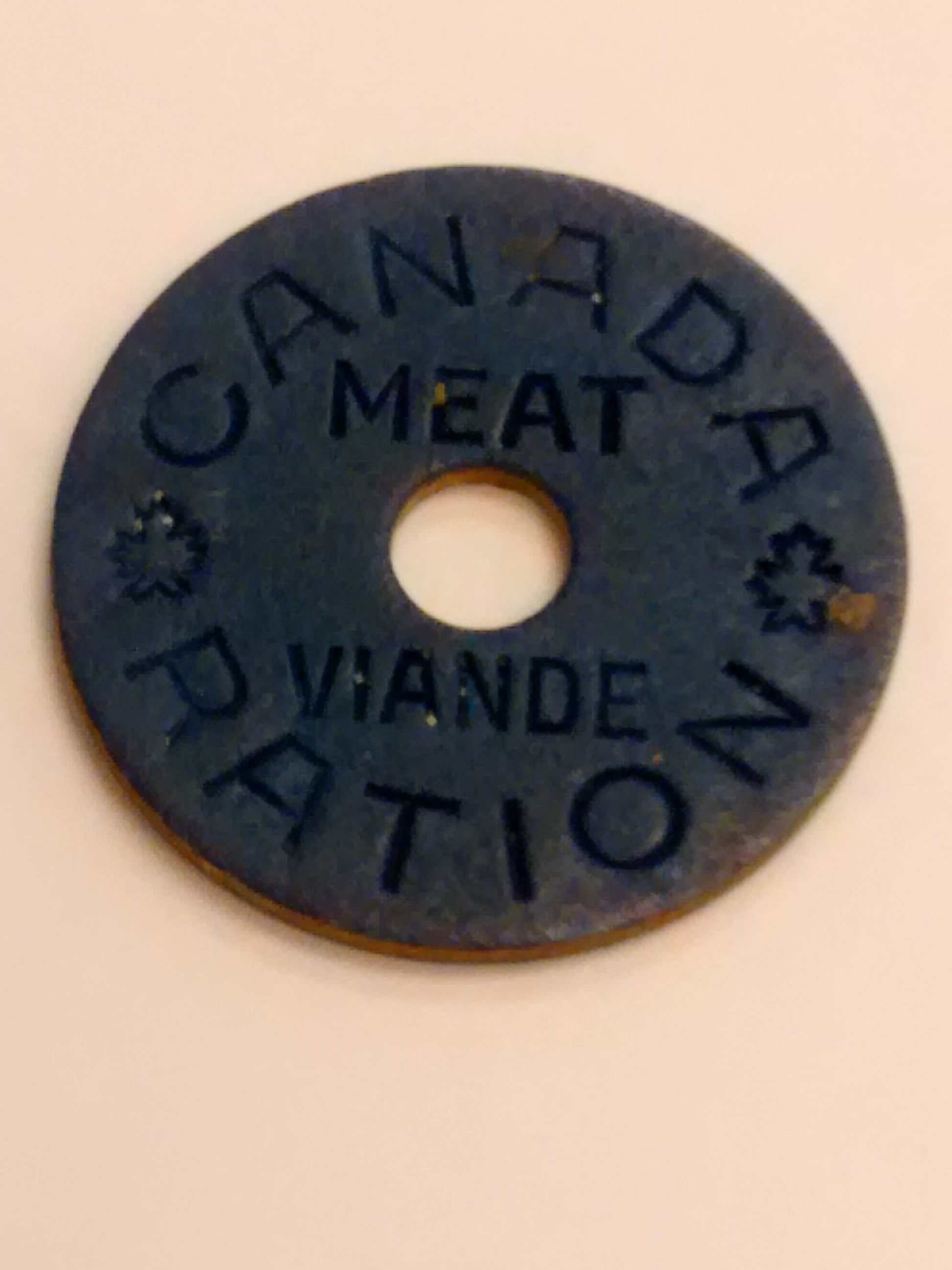
I remember the air raid drills which followed Japan’s entry in the war as a member of the Axis powers. I was issued an ID medallion from my grade one teacher at Sacred Heart School which I wore around my neck. Car owners were required to paint the upper half of their vehicle headlights with black paint so as to reduce glare which might be seen by (enemy) aircraft above. We were required to eliminate household electric light glare from being visible from the street. My dad fashioned window coverings made from wood and black roof paper. On one occasion the VPD plainclothes police called on our house twice in one evening due to the fact that light rays were escaping through imperfections in my dad’s handiwork. My dad was at work, a waiter at the Strand Hotel on Granville Street. The sirens were blazing an awful noise and the police at our door all of which made for something to remember. I can recall that particular evening as my mother decided to turn off all the interior house lights during an air raid drill and have us huddle in front of the cabinet radio in the front room. All that was visible in the room was the radio’s “magic eye” tuning indicator which projected a glowing green beam of light.
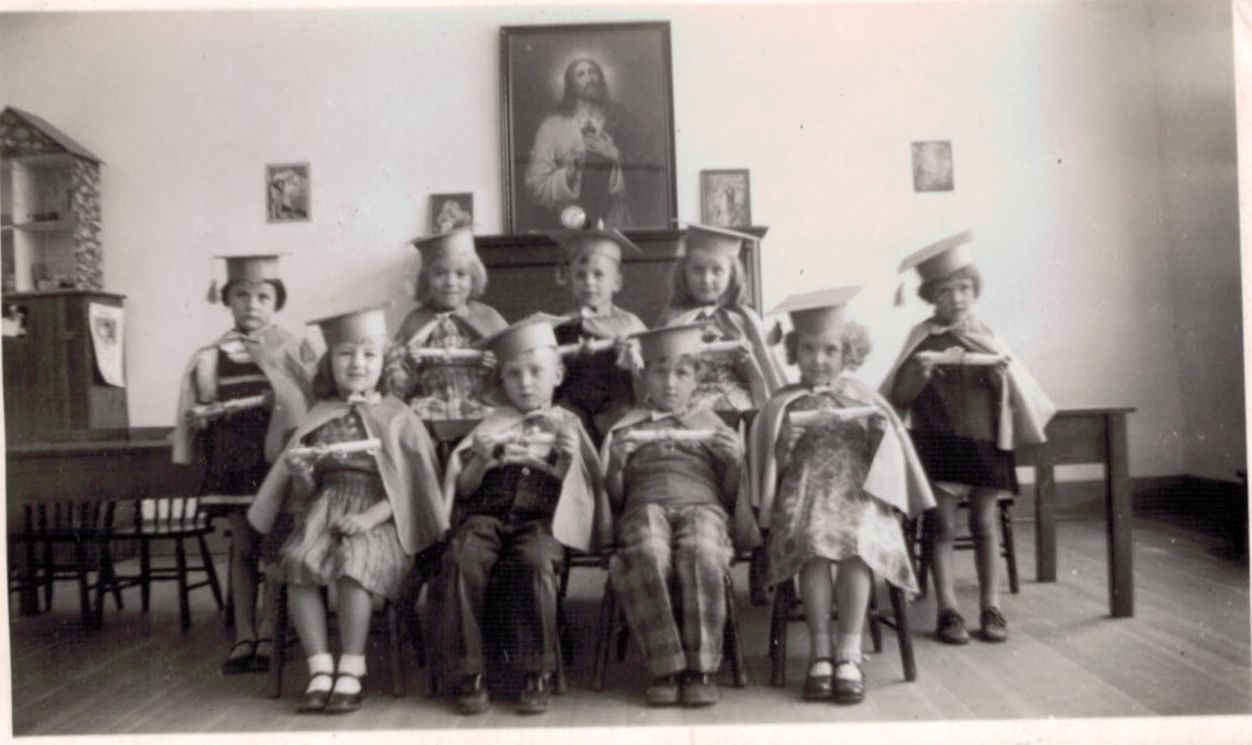
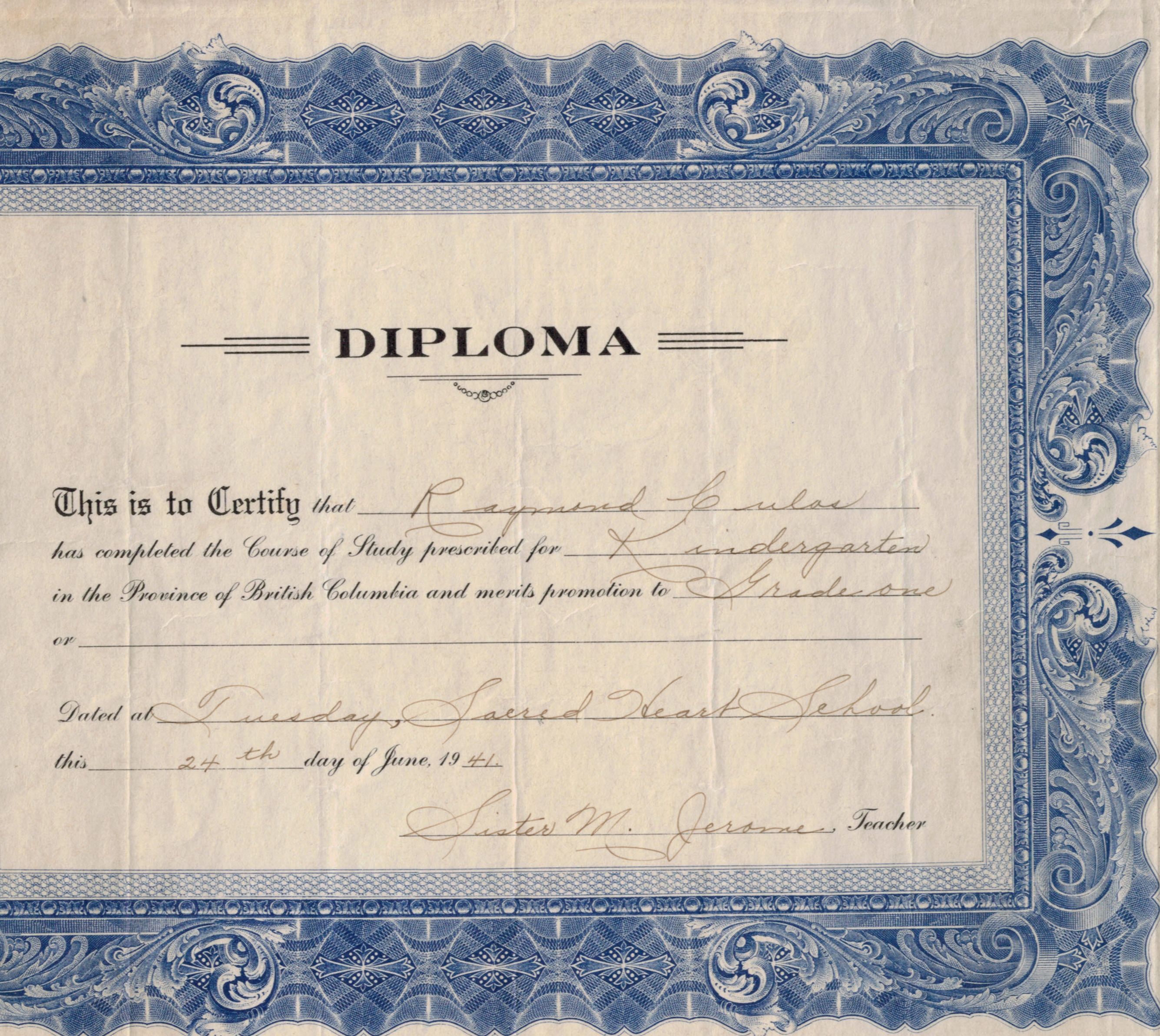
While attending Sacred Heart School, I joined the boxing team. In 1947, this ‘diaper’ weight killer weighing 77 pounds soaking wet won his bout scoring a decisive decision in an exciting three-round contest. The truth be known, I think I had an advantage over my opponent. The referee and judge was none other than Angelo Branca, the up and coming brilliant defense lawyer who also happened to be a personal friend of my parents. Mr. Branca, who also had lived in the Strathcona area when he was a youngster, attended Britannia High School before becoming a lawyer in 1926. At age 31, he became the Canadian amateur middleweight champion in 1934. Now wasn’t that keeping good company!
As an adult, I got to know the Honourable Judge Angelo Branca quite well while serving for a number of years as an executive member on the Confratellanza Italo-Canadese Society (the organization he founded). He was indeed the Italian community’s blue-eyed wonder, a living legend. I’ve been told that during his career as the “Gladiator of the Courts” he saved 59 men from the gallows, while four others met an ignominious end by hanging.

Another fun memory… For several years, the annual soap box derby was held at Stanley Park. In 1949, I became involved after a driver and his mechanic crashed their bug ‘Challenger.’ The driver’s mom, Mrs. Schofield, asked if my friend Lorne Bezubiak and I would take over and race her son’s two-man bug in the finals. In an earlier heat, Lorne with my brother Victor had been forced out of competition when it was discovered that they had inadvertently installed the steering mechanism in ‘Snorkel’ incorrectly. We agreed and off we went! The course, if I recall correctly, was roughly from Prospect Point to Third Beach. We were out in front and propelling at such a rate of speed that we worried we might collide with the motorcycle policeman in front of us. The cop’s role was to warn onlookers of the oncoming carts. He had his motorcycle lights flashing and siren blaring and I guess couldn’t hear me shouting at him to get out of the way. He seemed to notice us in the nick of time as we got within a few feet of his machine. He then accelerated, thus eliminating the possibility of an incident. Well, we rounded the last curve and instantly could see the ribbon strung across the road and observed the officials standing astride the finish line. Then it happened— the bloody left front wheel of our bug flew off and the axel dug in the soft asphalt causing Lorne to cascade into the air and into the wooded bush area. As my legs were ‘in’ the bug, I stayed with the soap box as it literally performed a cartwheel. I was momentarily knocked out but remained upright in the bug. Lorne suffered brushes and cuts to his arm and was taken to the hospital. Fortunately, he was not seriously injured and was quickly discharged from the hospital emergency ward.
Although we lost the race—in stylish fashion I might add—the story gave us a conversation piece that continues to appeal, after 65 years!
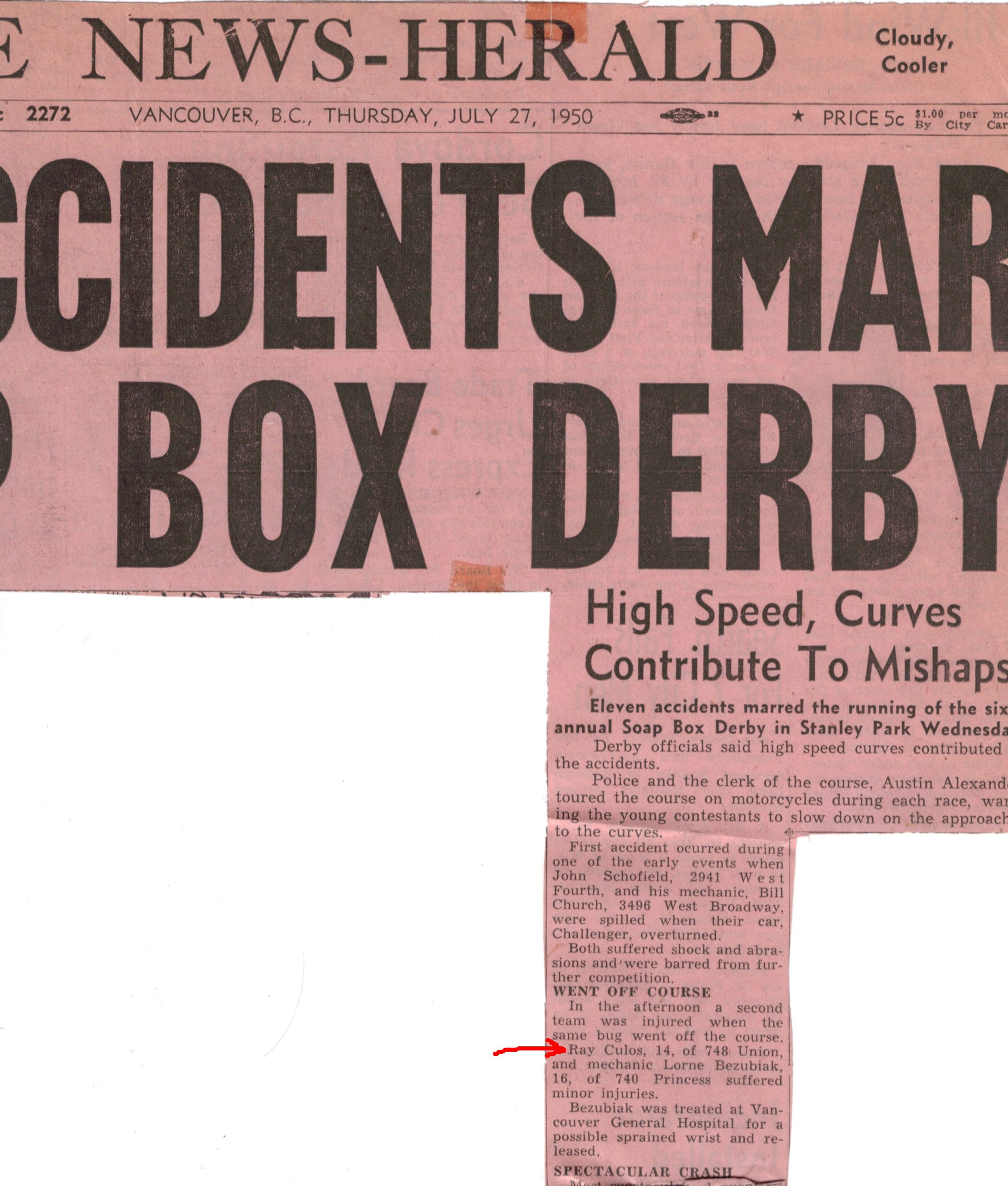
A.M.G. : Do you remember the impact the War had on your life and on Italian businesses?
Ray Culos: It absolutely had an impact, especially in the east of Canada, because that’s where the majority of the Italian population existed. Mussolini declared war in 1940, and, by 1943, he was out of business. He wasn’t a major threat and Italy was not in any way to be compared with the strength of a country like Germany. There was also a lot of opposition in Italy against fascism. Before the war, the Italian immigrant population in Vancouver would have been around 4500, most of them labourers and homemakers. They didn’t come here with a marketable expertise, or formal education. Nor did they bring money with them—some with just a few dollars and the clothes on their backs. They came to Canada to work, mainly on the railroad. Others worked in mines and/or on farms. A few and only a few were academics; I can count them on my hand, and I know who they were. There were just a few hotels and companies, like the Ferrera Court, Europe Hotel, Klondike Hotel and a number of grocery outlets including Branca’s Foods, Tosi’s imported products, Union Grocery Store, Benny’s Market, Venice and Montreal bakeries that were here from the 1920s. Their business came mostly from the Italian community.
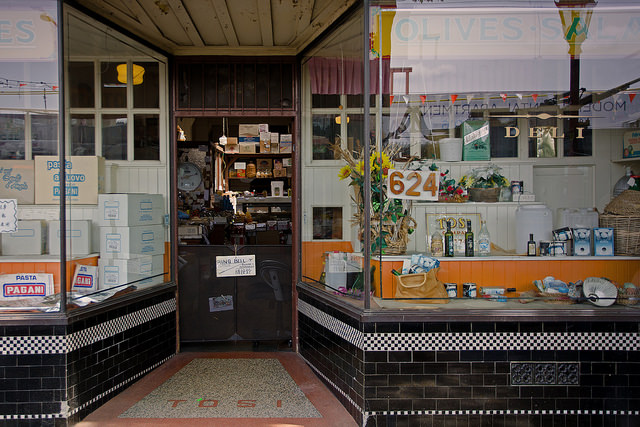
Image credit: Roaming-the-planet, CC, Flickr
One of the most exciting moments that I can remember as a 12 year-old “East Ender” was in 1948 when Rufus Gibbs, the hugely successful fishing tackle retailer and philanthropist, purchased the old Synagogue building at the corner of Pender and Heatley just three blocks from where I lived on Union Street. At the time I understood that he paid $40,000 for it. Since then I’ve heard that the price tag might have been somewhere between $50,000 and $60,000.
It soon became known as the “Rufus Gibbs Boys’ Club” and I took out membership soon after it opened.
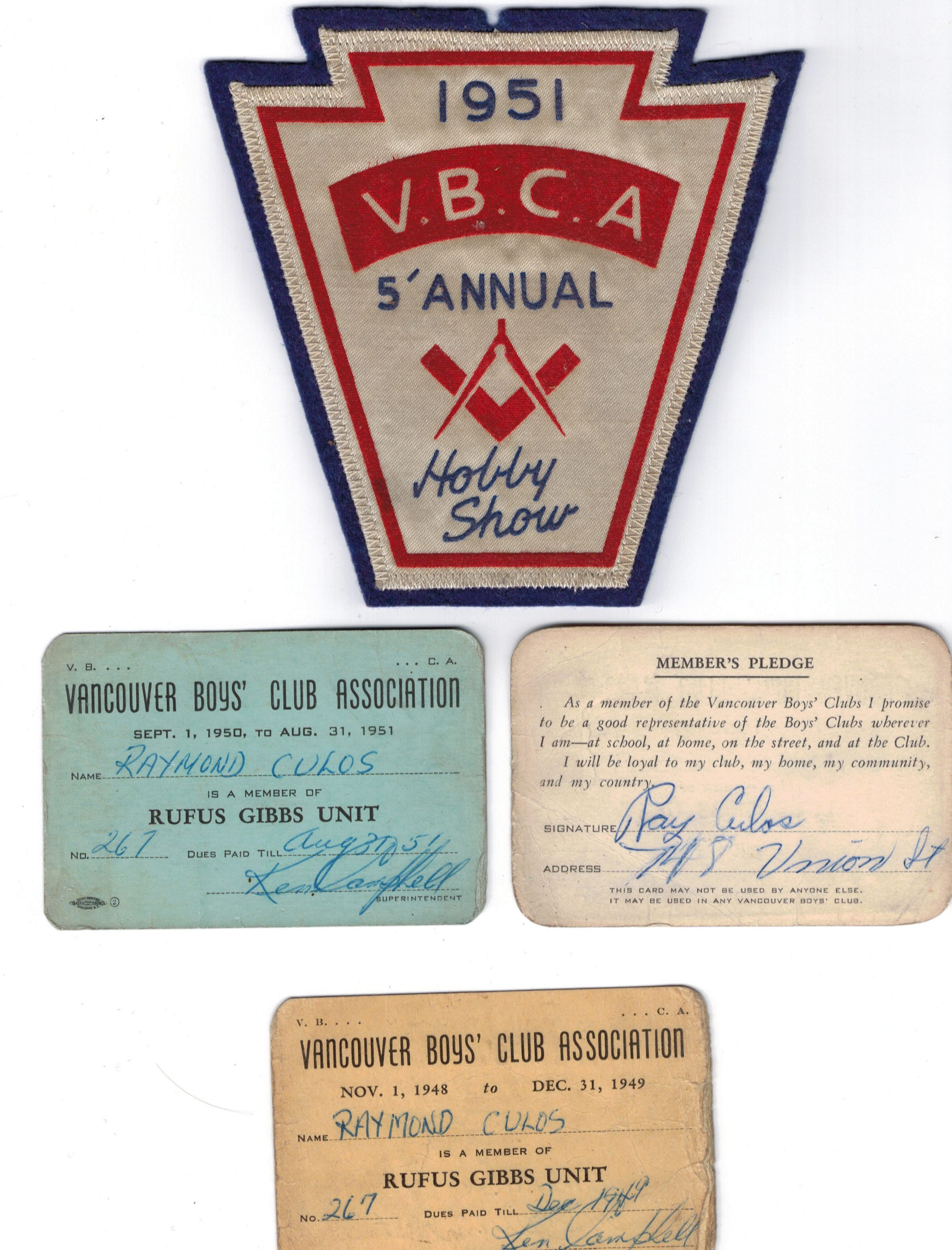
What was great about the facility was its programme. It featured basketball, some weight lifting, woodworking, a mini library and a place to play cards—sometimes for money when the adults weren’t looking. I was on the soccer team—I think it was 1950— and we had just won the championship on our home grounds of Woodland Park. Mr. Gibbs personally awarded each player with a green cardigan sweater on which a beautiful “Gibbs Boys Soccer Club” decal was attached. He stopped to talk to me and I was so thrilled. A couple of years later during a hobby contest, I was awarded a medallion for my coin collection entry.
I also can remember the night Sammy Davis Jr. came to the Gibbs Club. It was in 1950, if I recall correctly. He was performing at Philliponi’s Penthouse on Seymour Street and, on his night off he came down to the club and performed, dancing and singing in the gym. He talked to some of the guys individually and at one point addressed the entire group which seemed to number well over a hundred. He said things that made you appreciate that he connected with kids living in a lower income neighbourhood. He was great to see and watch. I learned later that because of a “colour ban” imposed at many of Vancouver’s hotels, he actually stayed with the Philliponi family in their house next door to the Penthouse.
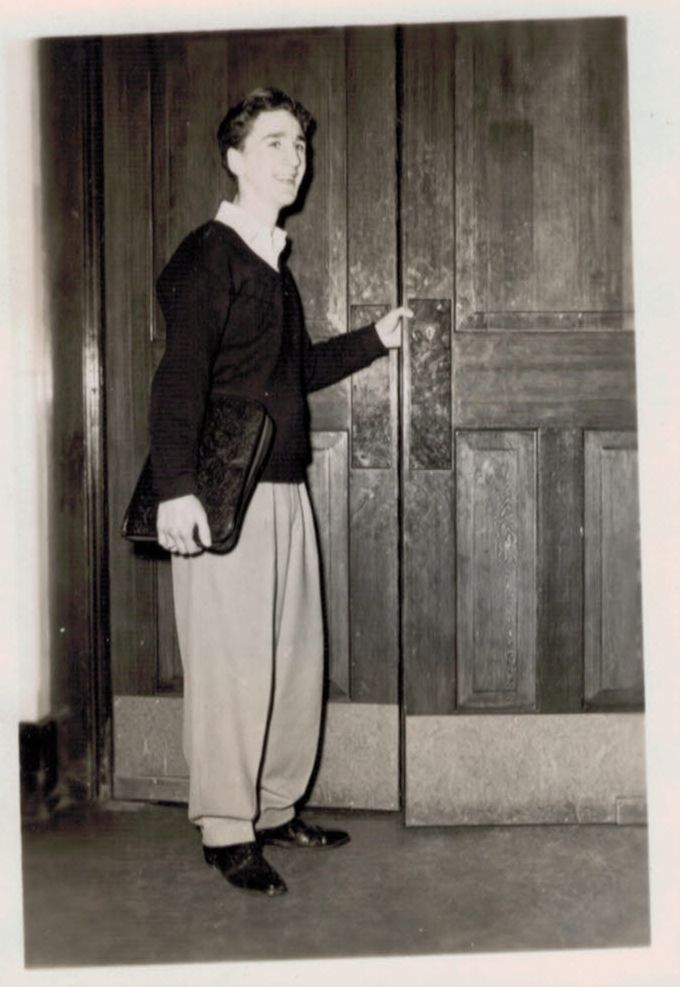
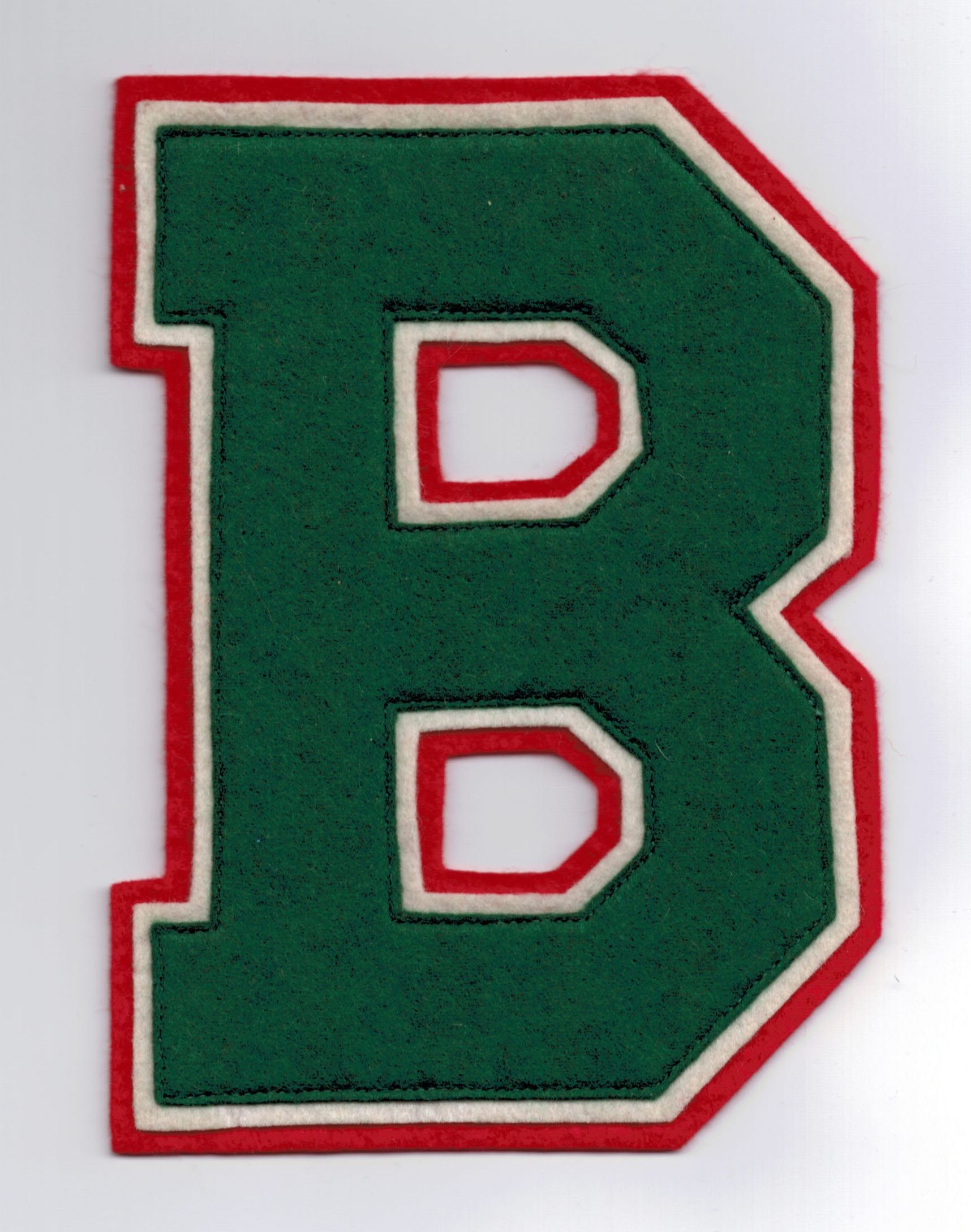
When I went to high-school in 1949, I remember filling out the forms that every student had to fill out, and under “nationality” I wrote Canadian, but they asked me to change that. They asked: “Where was your dad born? Italy? Then you’re Italian!” I think it was mostly the teacher doing that, because the law had changed two years before, in 1947, when we got the Canada Citizenship Act.
My dad couldn’t get a job during the Depression when they found out he was Italian. He always worked, except for periods during the Depression, and not working was very hard for him. I remember reading in his diary entries like “No work again today…”
I didn’t sense the discrimination that permeated my environment when I was a child. When I went to the Vancouver Sun, they would all call me “the Italian guy,” and although I believe I was the first Canadian of Italian origin who was on the management team, few referred to me as Canadian.
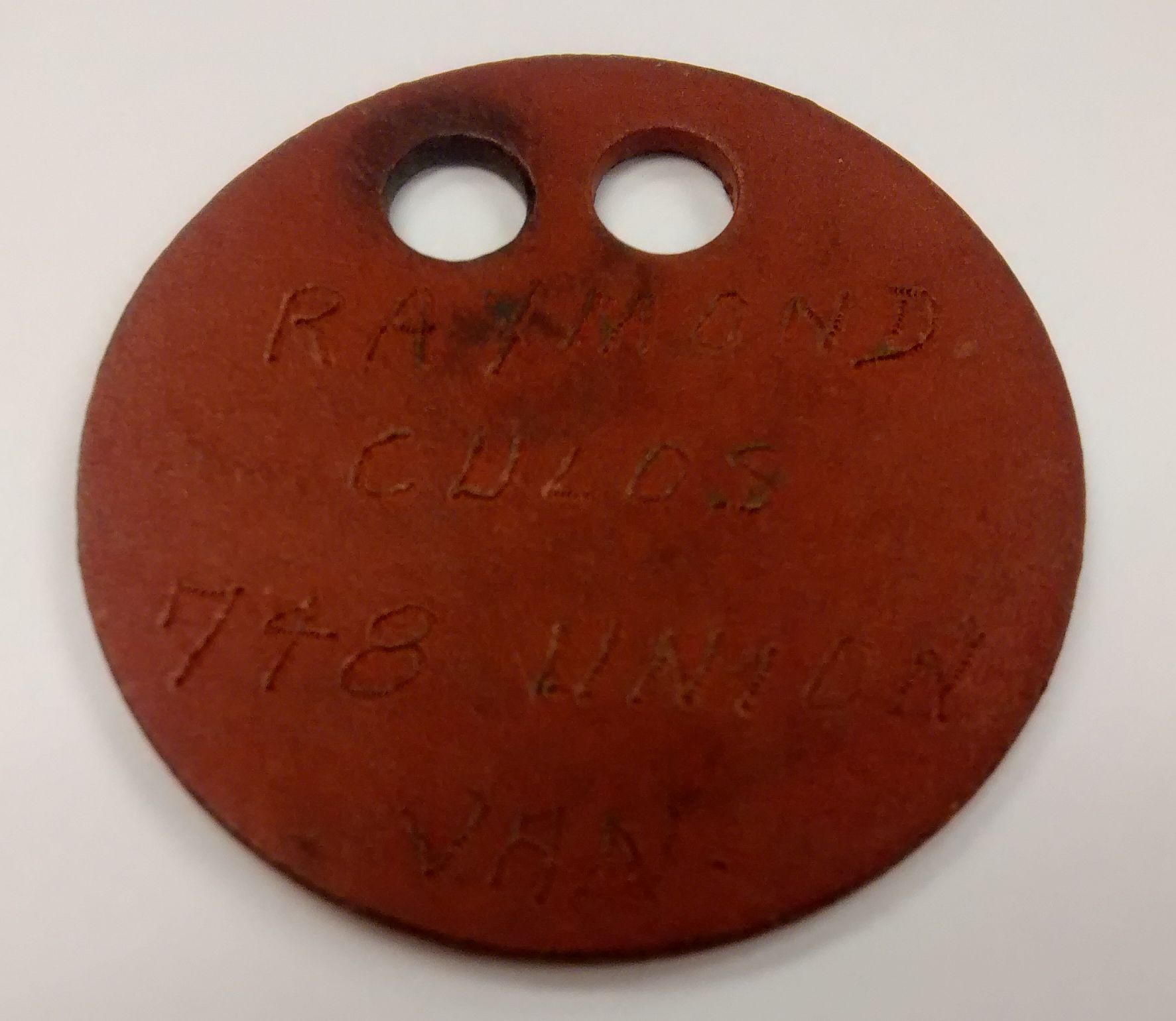
A.M.G.: Who are the oldest Italian families in Vancouver?
Ray Culos: Angelo Calori, the man who built the Europe Hotel, that Pi-shaped building around the corner, came here in 1886 just after the Fire (Vancouver was almost burned to the ground in June 1886); his family is still here. Larry Politano, whose grandfather had an Italian grocery store on Cordova Street, came here around the same time. Among the professionals who arrived at the turn of the 20th century were sculptors Carlo (Charles) Marega and Alemando Fabri. Marega’s lions are situated at the south end of the Lions Gate Bridge and his works can be seen at the Orpheum Theatre, Marine Building and at the Art Gallery.
My grandfather came in 1907 and my dad in 1910. The first big Italian immigration wave was in 1910, 1911 and 1912, before World War I, because Canada invited Europeans to come here and offered them free land in some areas of the country, especially the Prairies. Italians landed in Halifax and went to Montreal or Toronto, although some came to Vancouver. I’ve written about those people and what they did in Vancouver. The later waves of Italian immigrants arrived in Eastern Canada due to opportunities or perhaps because their sponsors lived in that area. That’s how immigration worked then.
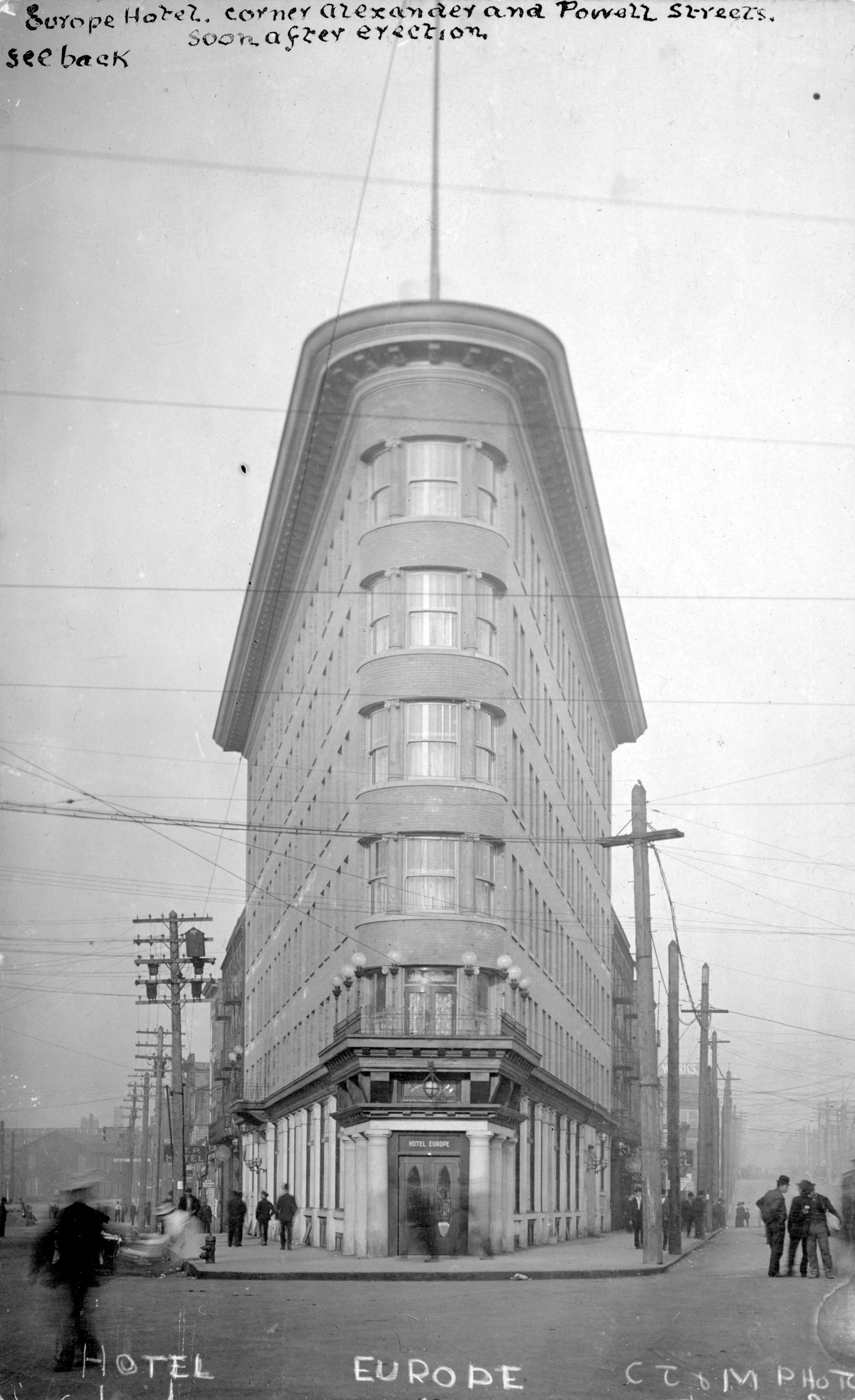
Image credit: M. James Skitt Matthews, public domain
In the United States the immigration from Italy largely came from the southern part; one million Sicilians immigrated to the US from 1885 to 1925. Italy was very regional in those days, so if Sicilians went to New York, then another group went to another city. The immigrants here are mainly from the central and northern part of Italy, like my family.
Some of the immigrants who were prominent in Vancouver belonged to the Sons of Italy Society, which was founded in 1905. Two or three of the early executive members were barbers (Antonio Cianci, his cousin Felice Cianci and Francesco Federici). Federici proved the most financially successful of the barbers, owning franchises with the CPR including at the Hotel Vancouver and Banff Springs Hotel. He operated on that high a level. Like many in his day, Antonio Cianci had been educated in Italy at a seminary. Not all became priests, as it was a way to get an education with little or no financial commitment.
My dad registered my brother and me as junior members of the Sons of Italy in 1945 when he was President and I was nine years old. The pride came from living with a large group of people who liked you. They all knew my mom and dad. We always felt very lucky to be a part of that group of people, and many of my friends today are the friends I made when I was living on Union Street. Still, once per month, I attend a luncheon where there are 16 to 22 men around my age who meet and talk about the old days. I don’t know if there’s another community in Vancouver of this kind. These are first-generation Canadians— most of them excelled in athletics, some of them are even in the Canadian Lacrosse Hall of Fame. Soccer was very big—there was a Columbus soccer team which used to play at Callister Park across the street from the PNE on Renfrew, which was frequented by the Italian immigrants of the 1950s.
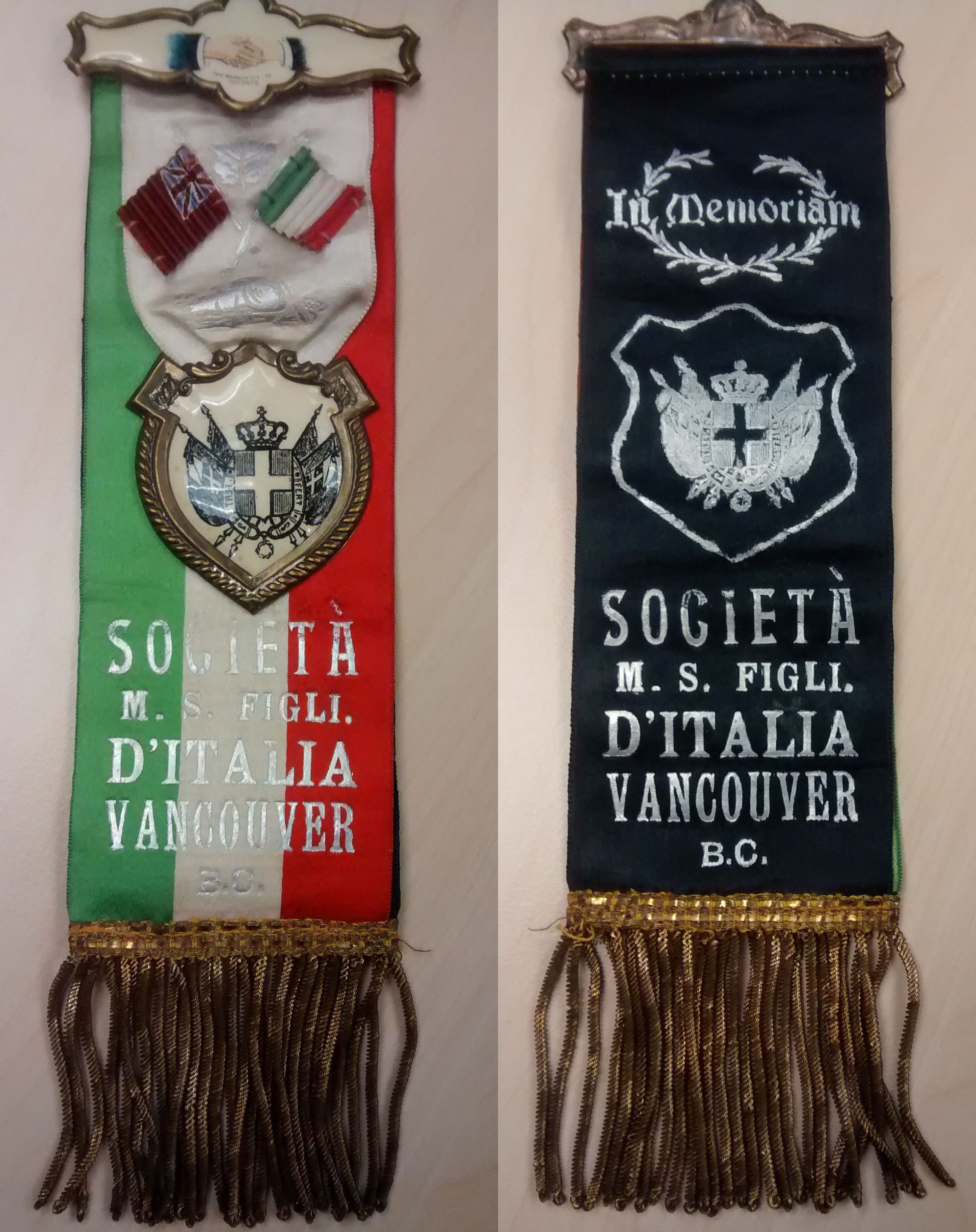
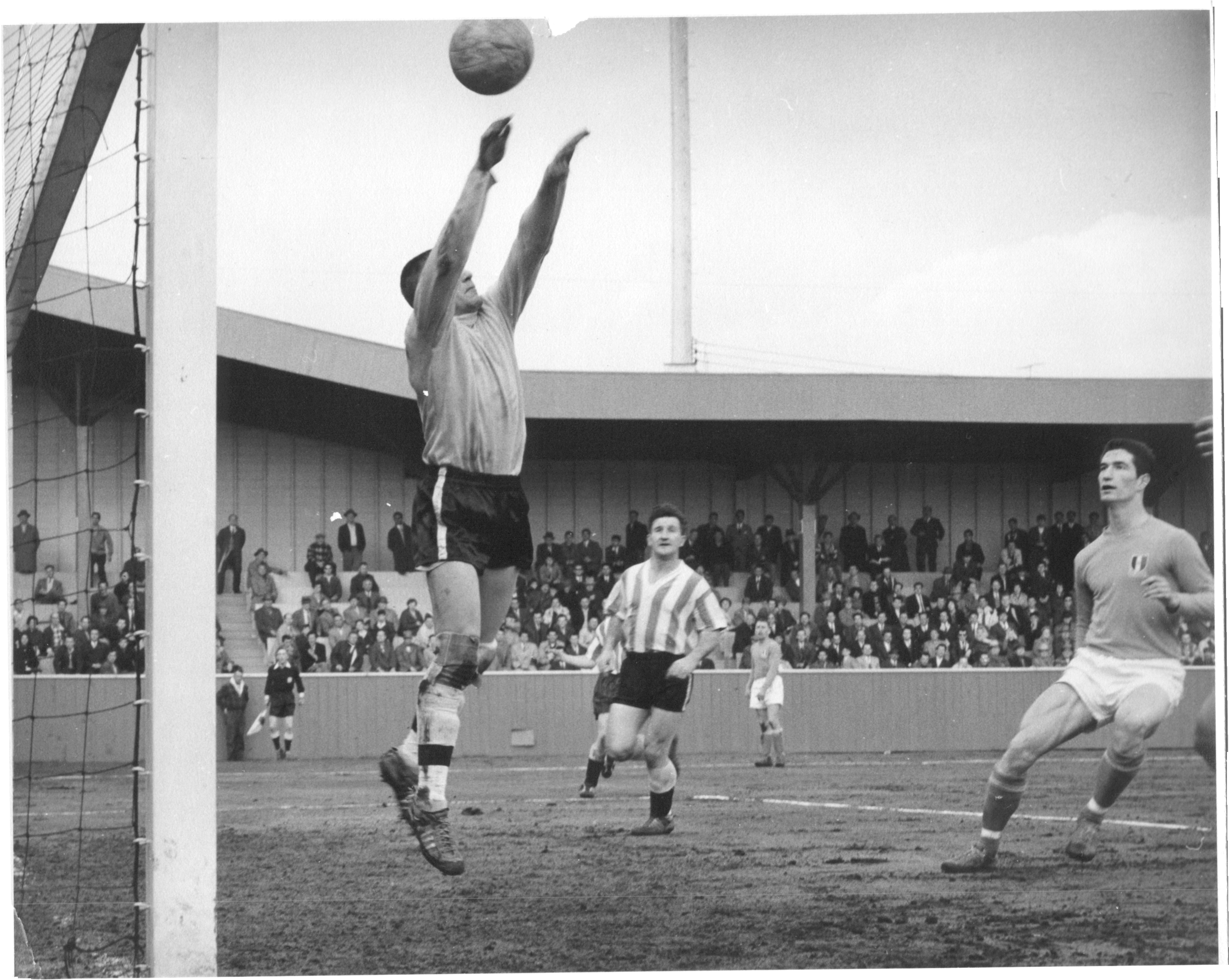
I know the present generation of young people are looking for short answers as to how it was to be Italian during the 1940s and 1950s. However, when I was very young, little was said outside the family home about being Italian or of Italian origin. I went to kindergarten in 1940, and so the first years of my school were during the War. The way today’s youth perceive being Italian differs somewhat from the way we experienced things and in the way we conducted ourselves. People coming today have opportunities that were not available then; there was no health plan and no Canadian pension. It was a different world, and we made out the best we could because there were few alternatives available. Today, most people identify Italy as a modern industrialized country which has gained world acclaim for its progress in producing luxury cars, trendy fashions, innovative furniture and appliances, and advanced electronic gadgetry. Moreover, the world continues to be in awe of the treasure trove of historical art, culture, artifacts and architecture.
A.M.G.: Have you traveled to Italy? Do you still have family there?
Ray Culos: Judy and I – and family members – have been to Italy half a dozen times to absorb the culture and appreciate where the family roots originated. I still have second cousins there, but very few. But I know the history of the family because I’ve done research. My family kept in touch by letters, but a letter took two weeks to get to the destination back then, and because many Italians from small villages didn’t have an education they didn’t write that often. To make international calls, we had to go to a phone exchange, even up until the ’70s. In some situations, Italian immigrants living in Canada would not have been in a position to contact relatives in Italy for long periods of time. During World War II no mail was sent to or received from Italy.
A.M.G.: When you went to Italy for the first time, did you have any sense of belonging? Did you look around and say “This feels like home,” or were you simply a tourist?
Ray Culos: Absolutely. It was profound, an epiphany. I went to both the little towns my grandparents came from, and did the tourist things in the big cities. I was 38-39, and the biggest impact was this (and I didn’t even think about it until I got there): I thought that because many of the pioneer Italian immigrants to Canada were labourers, they had relatively few possessions when they started out. It’s true that some had become successful like those who ended up owning commercial property, businesses and hotels. Notwithstanding, it also has been noted that a few grape merchants made a bundle selling home made wine including those who later went into the beer parlour business. But, in Italy, I sensed that the buildings I saw in Milan, Rome and Naples and railroads and airplanes were all built and owned by Italians, and the finance district. All the guys wearing thousand-dollar suits were Italians. Here the early immigrants including some of my own people went to work with a shovel… It was so profound I cried.
I think the world fell in love with Italy again in the 1960s, when it successfully came out of the depths of the depression caused by the collapse of Italy’s economy following World War II. Thanks to America and its Marshall Plan, Italy not only survived but rose to become a leader in fashion, cars and computers in the early ’60s and ’70s. Many of us joke now, saying that everybody wants to be Italian today, but the truth is, in 2014 Italy and Italians have a great acceptance level from other peoples. 40 million tourists travel every year to Italy.
A.M.G.: Did you ever think “I could live here. I could sell my house, get a job here and start a new life”?
Ray Culos: No, it never occurred to me. It is a very beautiful country, but I am not Italian. I was experiencing a connection to it that I inherited from my parents, and I loved that, but there’s no other country in this world I would rather live in than Canada. This is my country, and I would die for it if I was asked to defend it.
A.M.G.: Are you fluent in Italian? How was the language preserved in the local Italian Community?
Ray Culos: The people who came here with my dad would not have spoke Italian but a dialect. I don’t speak five words of my dad’s dialect. He was from Friuli, north of Venice, and they speak Friulan, which is the only written language other than Italian in Italy, because they preserved their language in that area. So my dad spoke Friulan, and my mother spoke Abruzzese. The old dialects are still spoken locally by the older immigrants and their Canadian-born children. However, in Italy, if you do research, you can see there’s a resurgence and an effort on the part of the Italian government to preserve these dialects. In the 1930s, we had a teacher from Rome, Cleofe Forte, and she was brilliant and taught hundreds and hundreds of kids.
When I went to Italy the first time, I prepared myself by taking classes, but then I realized that it’s a different thing to speak tourist Italian. Of all the men I meet with at that monthly luncheon, I don’t think there is one who is fluent in Italian. What I’m trying to say is that, in this wonderful country, we are a quieter society; we’re not bombastic flag-wavers. So we leave behind our European connections in one or two generations, and many of us marry outside of our own ethnic community, as I said before. My kids are Italian, Icelandic and English. They’ve married outside of those connections, and now my grandchildren have Polish, English, Italian, Icelandic, Hungarian and German blood.
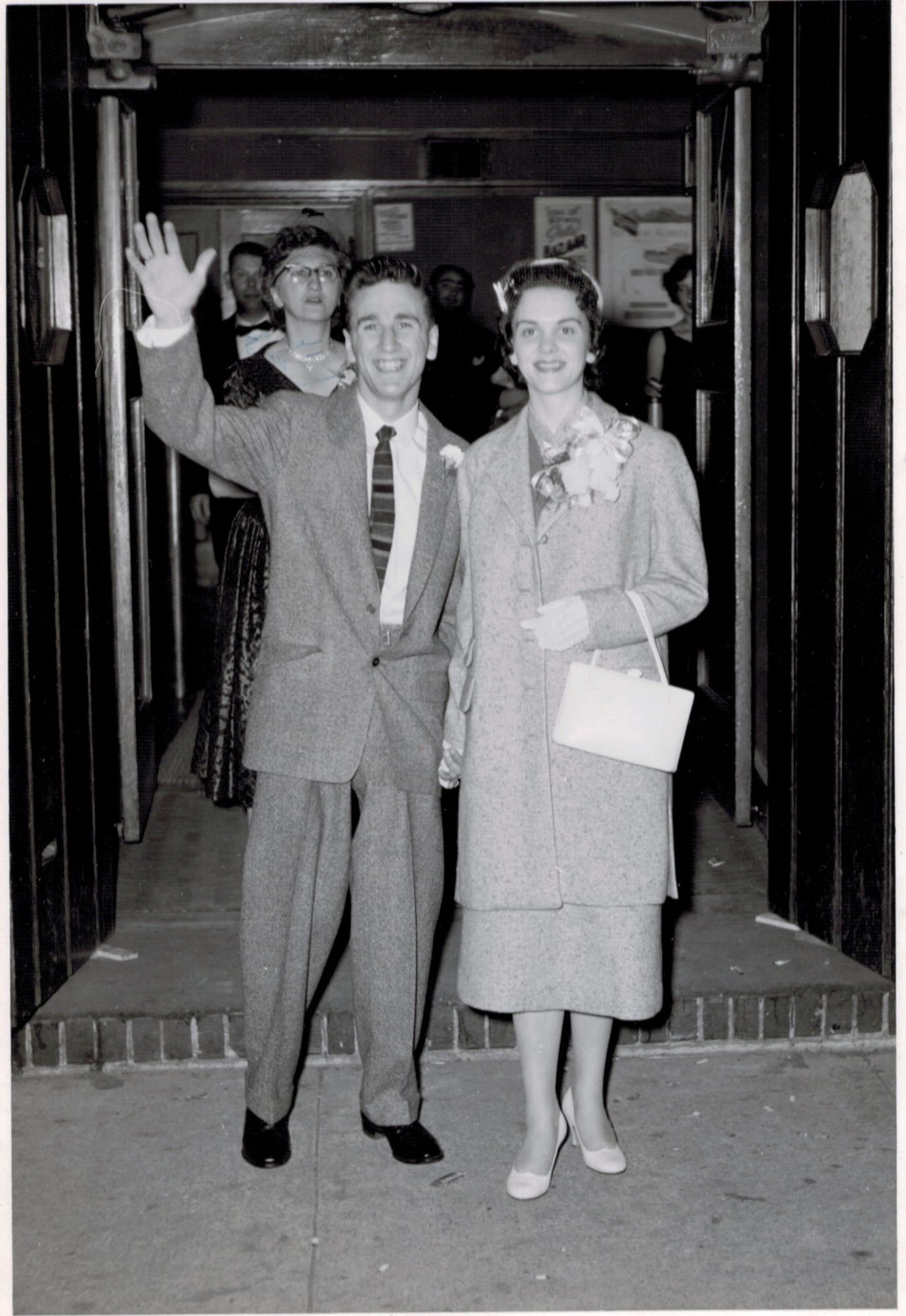
A.M.G.: Sometimes communities seem to make a conscious effort to prevent that from happening…
Ray Culos: Maybe first generations. If you were born outside of Canada, you can be so attached to your previous life that you might think “my daughter should marry someone from our town.” In fact, I had that proposed to me by a woman. I had met her in Italy before. She had two daughters, and she asked me to show her a picture of my sons. I had one of those little school pictures on me, so I passed it to her. And she showed it to her older daughter, and the daughter put her finger on the face of one of my sons, as if to say “this is the one”.
There is good reason for some people to look at it that way, because the parents would appreciate and understand the upbringing of their fellow citizens from wherever they’re from, and they would like to see their kids marry someone from there. You could go out tomorrow, a young person, and meet someone very nice, and before you know it, you get attached, but you wouldn’t know anything about how they were brought up and what their feelings are towards religion or education, for example. But, with someone who grew up across the street, you often had the same basic history.
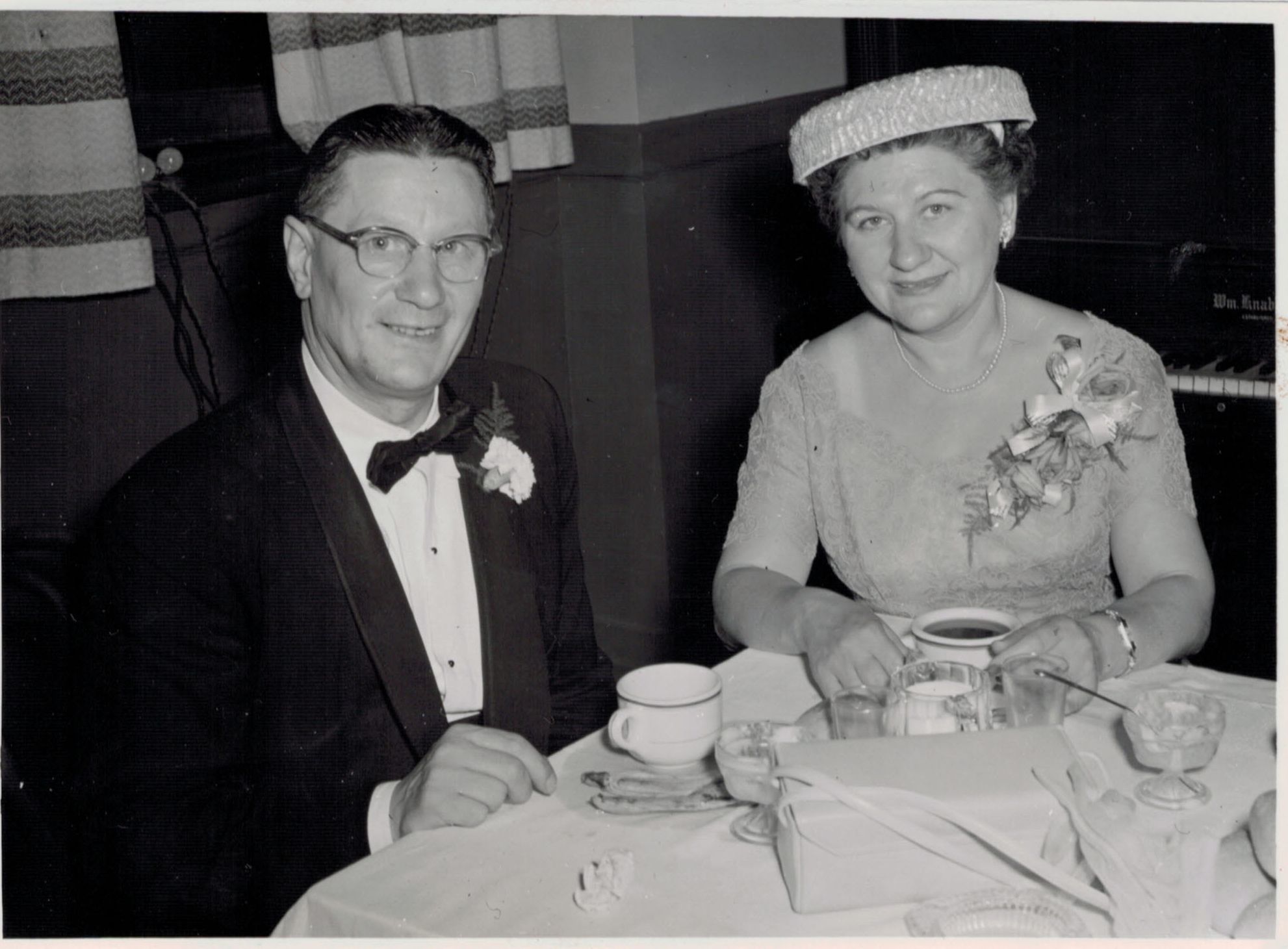
I remember when I introduced Judy, my wife, to one of my mom’s aunties, and the first thing she asked was “Are you Italian?” Our wedding was like in the movies, with the old Italian people dancing to old Italian songs, and my grandmother gave a wonderful toast (it’s called a brindisi). The first of my five grandchildren was married this year, and I had this incredible warm feeling about how I was encouraged and loved by my Italian people. I always felt I was 6’2 and handsome—that’s how they made me feel. And I’m attempting to project that same sense of family to our children and grandchildren.
I met Judy in high-school. If you go to a school and meet people, and your friends are those from your neighbourhood, chances are that one of them could be someone you want to spend the rest of your life with. We were very accepting of each other’s culture; we are all Canadians.
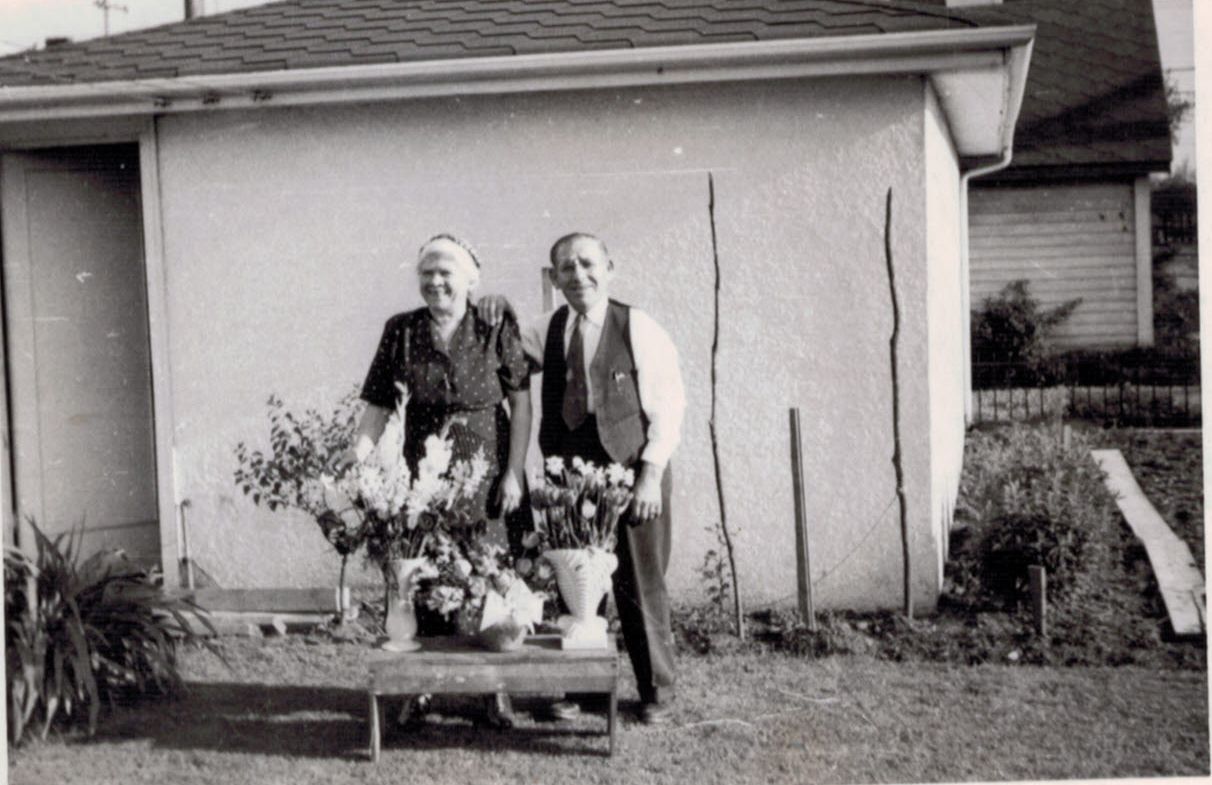
A.M.G.: What do you remember about the 1950s?
Ray Culos: I was a teenager in the ’50s, and from my parents I inherited a desire to work and succeed. I shined shoes just down here, on Columbia and Hastings Street. I worked for an Italian who had a six-chair parlour and I would shine a pair of shoes for 20 cents— the shiners got 10 cents, and the owner got the other 10 cents. I even wrote a book called Vancouver’s Shoeshine Boys in 2009. I delivered newspapers along Pender Street in Chinatown for four years, every day, six-days a week, and never missed a day due to illness. Then, I built up this loyalty to The Vancouver Sun, and I worked in the office answering telephones in the evenings handling complaints and missed deliveries, because The Sun was an evening newspaper, like The Province, in those years. Then, following high school graduation, I had an opportunity to work full time at the newspaper. I took adult education courses, and then later studied marketing at BCIT; as a result I qualified for more senior positions including becoming Circulation Training Manager at Southam Newspaper Group (the parent company of The Vancouver Sun and The Province).
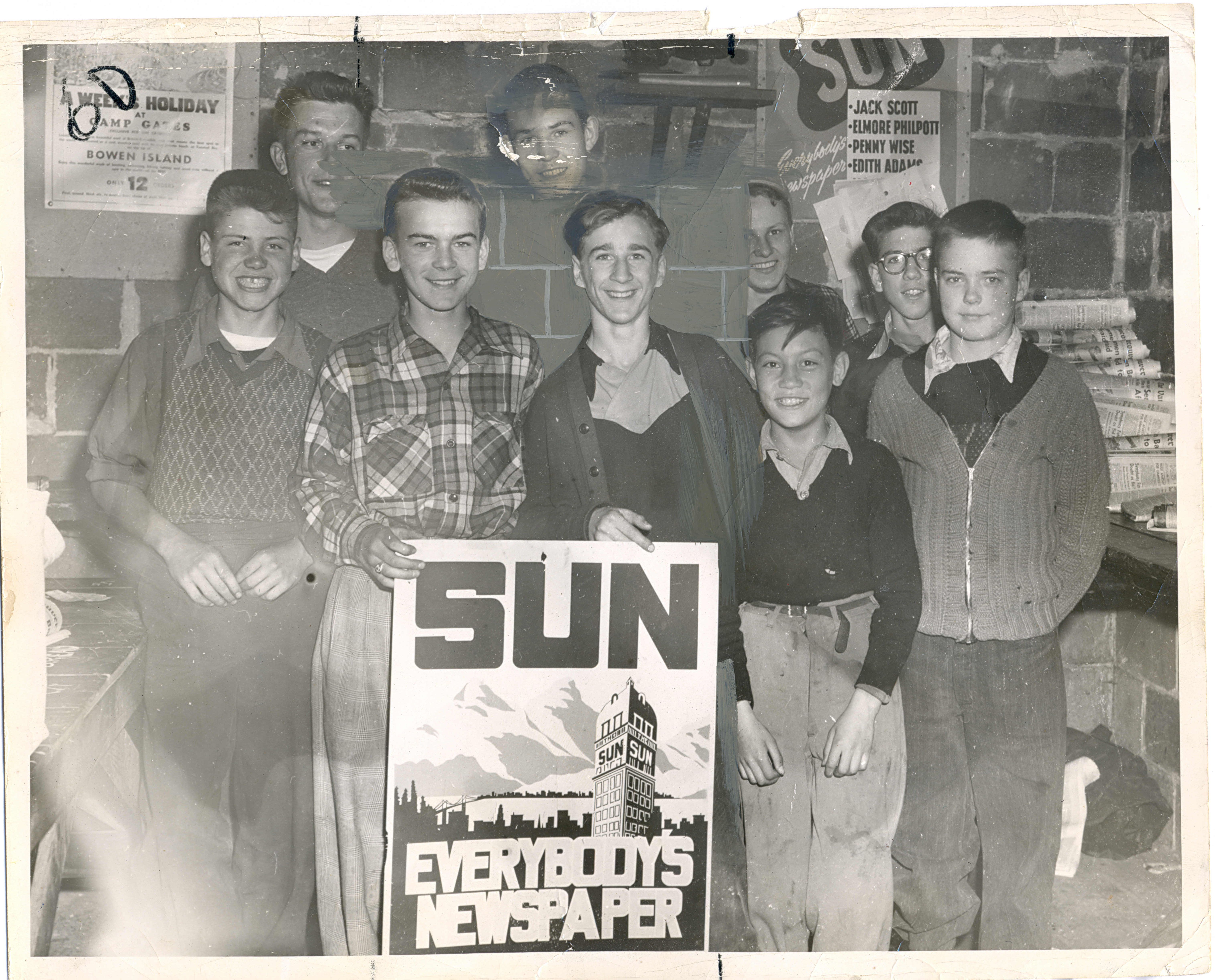
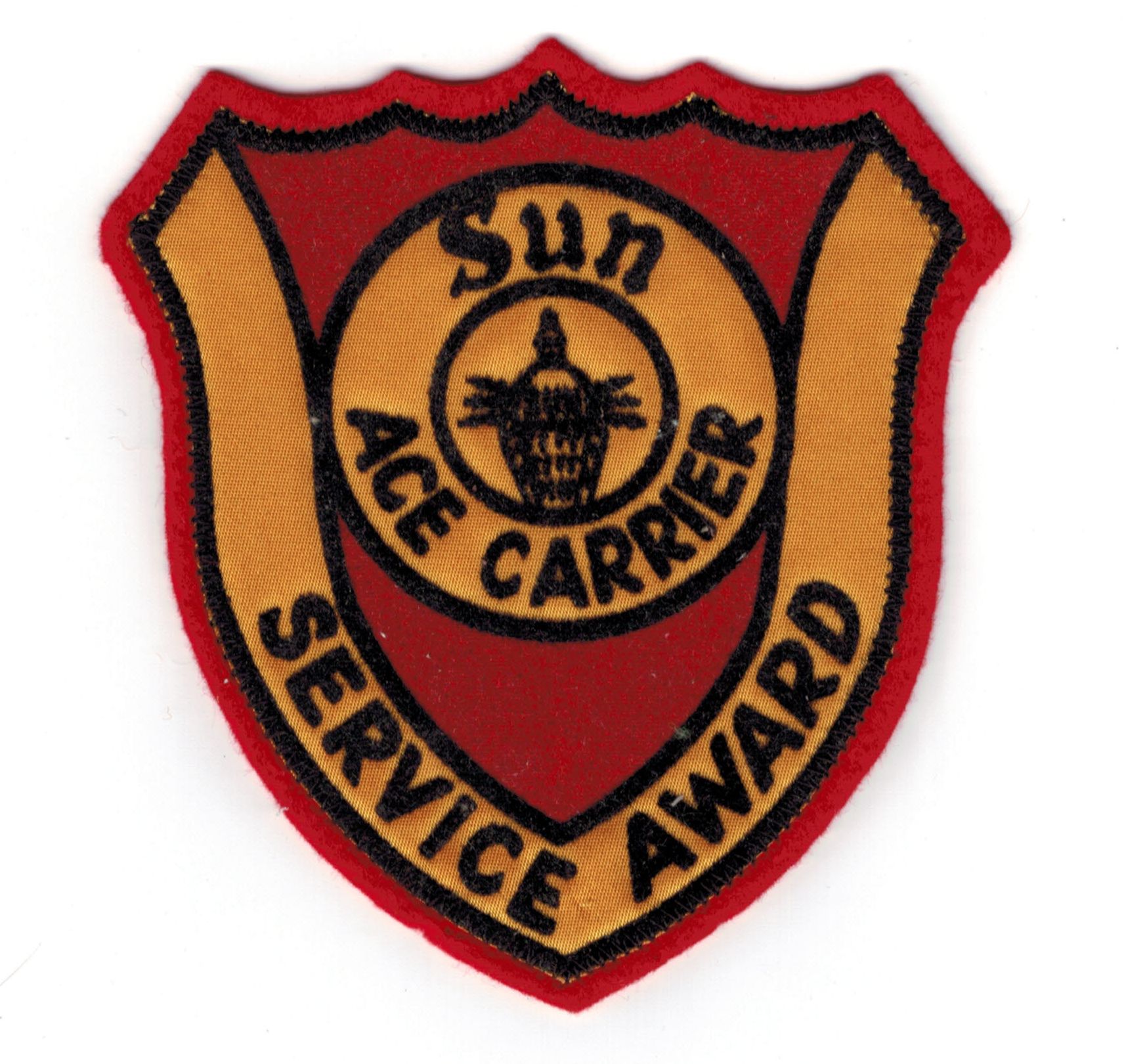
I was a rounder and, like everybody else, I gravitated toward the fashion of the day. There was a tailor here, in Chinatown, and we, the young kids, had our clothes tailor-made there. We got the money from working shoe-shining and so on; my parents never gave me a cent to buy non-essentials, because they didn’t have very much. I sold confectioneries at the 1954 British Empire Games—and witnessed the Miracle Mile race which was won by Roger Bannister—and also sold programs at the PNE in the summer. I even set a record: I made over $600 in 11 days.
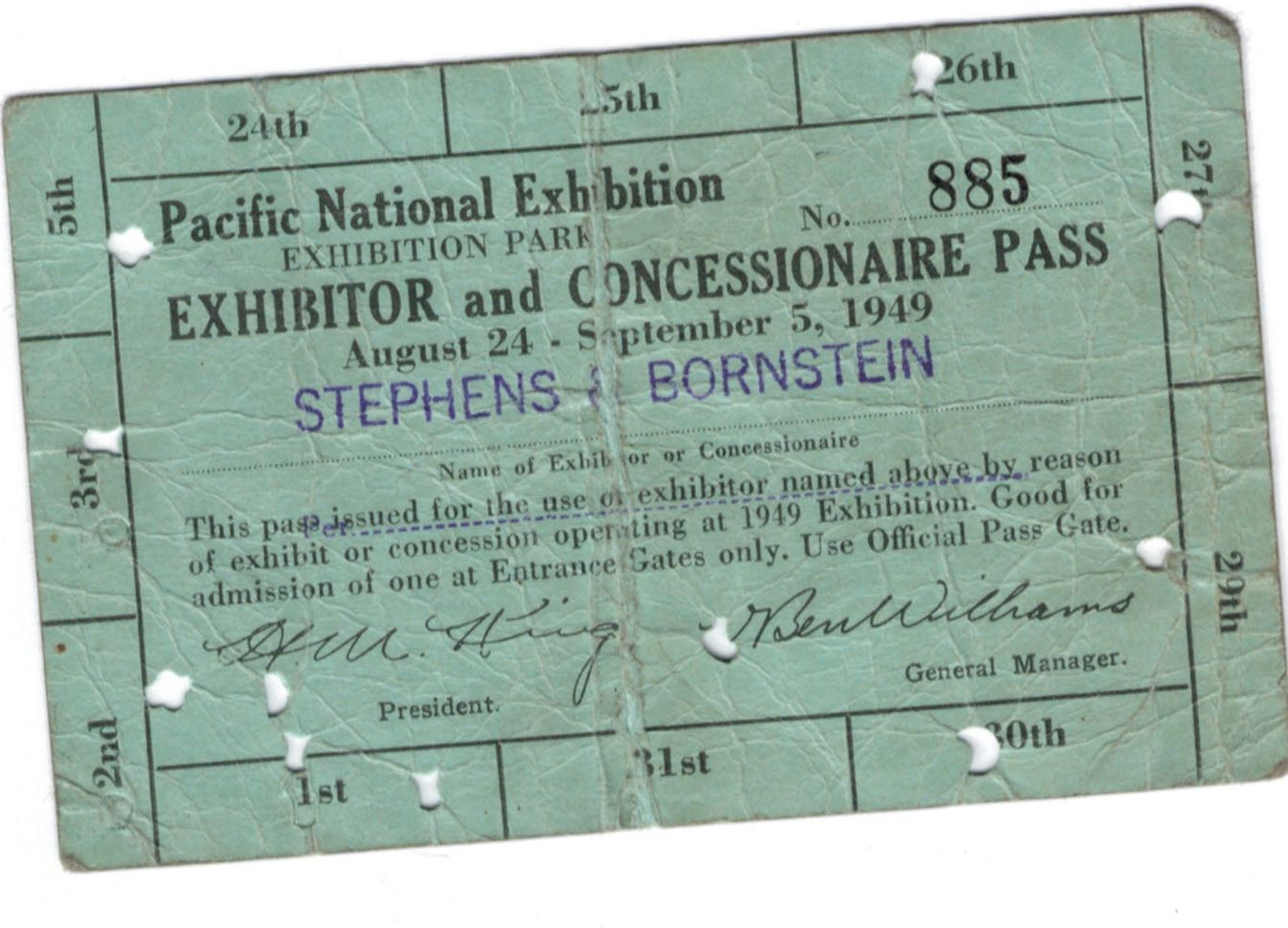

My first car, an 1928 Chevrolet, had wooden spoke wheels and a crank—you had to crank it up. In the city of Vancouver, there was about seven or eight of these vehicles owned by Chinese people, like a wooden box pickup where they displayed their vegetables. It was a beautiful thing. Children ran after me to get a ride. I even took it to Britannia High School, but the principal wasn’t impressed.
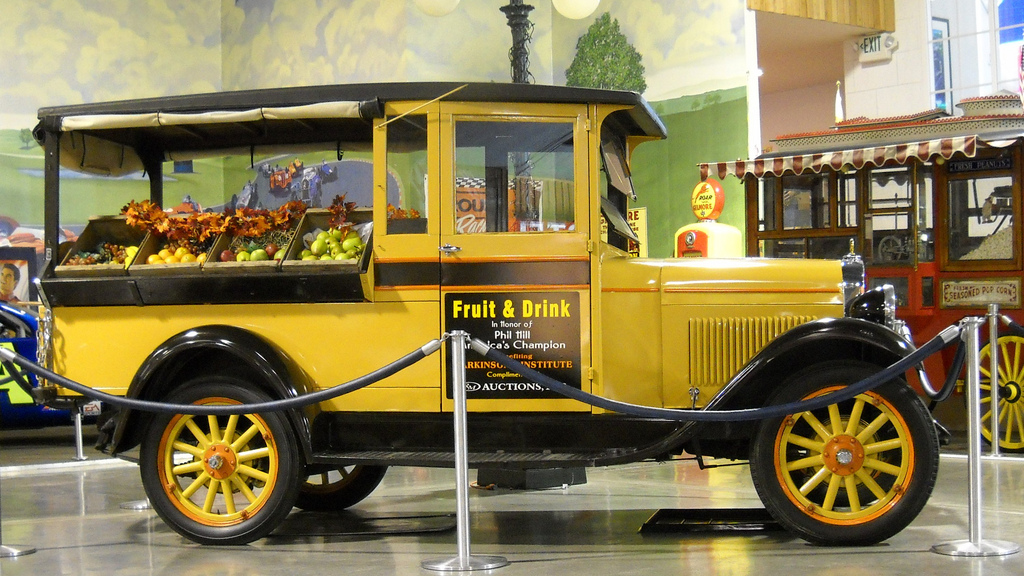
Image credit: Jack Snell, CC, Flickr
In the ’50s, I guess it might be fair to say I was gravitating to the top. I was President of the Students’ Council, and I could dance; I did a lot of that. I’m pleased to say that my partner and I won several “jive” contests, and on several occasions, all other dancers would stop to watch us go through our routine while throwing coins— mostly nickels and dimes, I’m afraid.
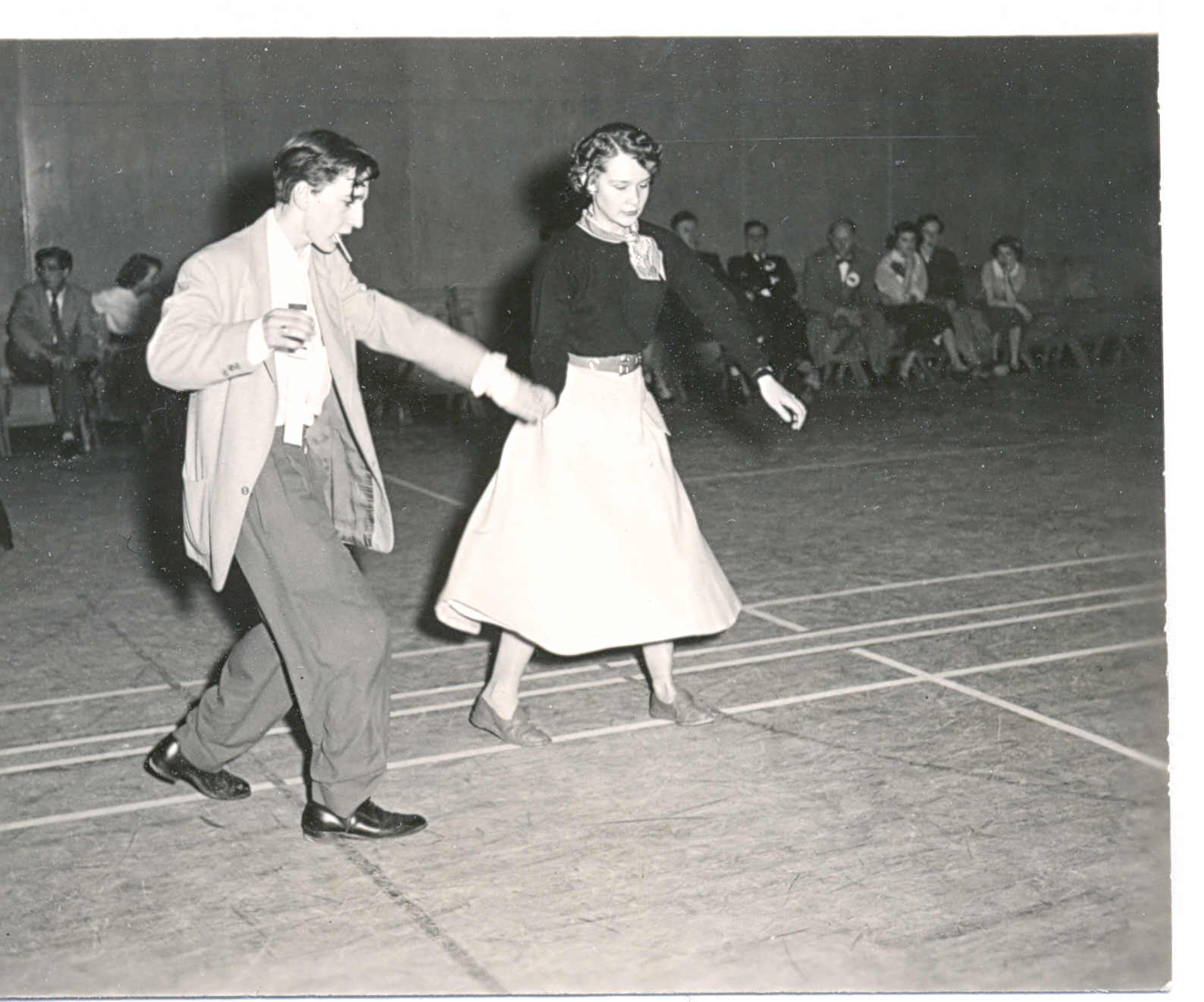
In those days, a person could go almost anywhere, to any major firm, get hired and believe, in all likelihood, that they could eventually retire from that company. Today, you can have seven jobs before you’re 25. I started in 1956 and retired in 1993 in the same company, so I grew up with these people in terms of work. When we were at the Sun Tower building on Beatty Street, that warmth you described was very evident. One of the reasons was that we were not making a large salary, and the camaraderie among one’s co-workers helped create an ideal work environment. In 1956, the starting salary for a circulation district manager was $50/week, which didn’t allow for much more than the essentials, and so a lot of the newspaper employees were more committed to the craft than to the money.
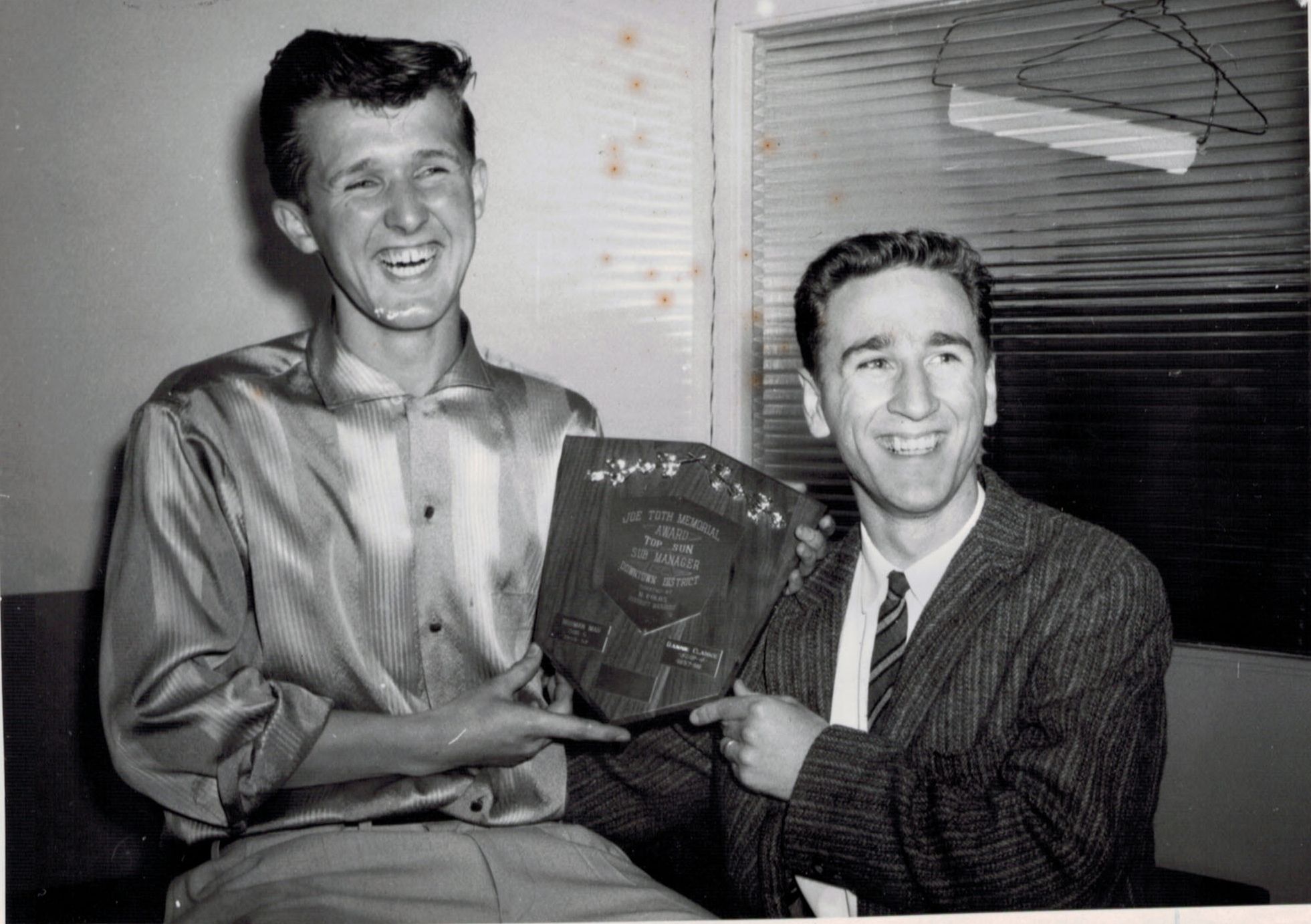
The other day, I read a very interesting article in the paper comparing the amount people made in the 1960s and what houses and cars cost then verses what they cost today, and there is a $20,000/year downward gap. When I retired in ’93 I understand that circulation district advisers were earning around $60,000/year. However, I don’t think many circulation people make that kind of money anymore. A house, in 1961, a brand new three-bedroom home, went for $15-$20,000. My wife and I believe that those of us who married in the 1950s were more fortunate then the young couples of today who are looking to own a house in the Vancouver area.
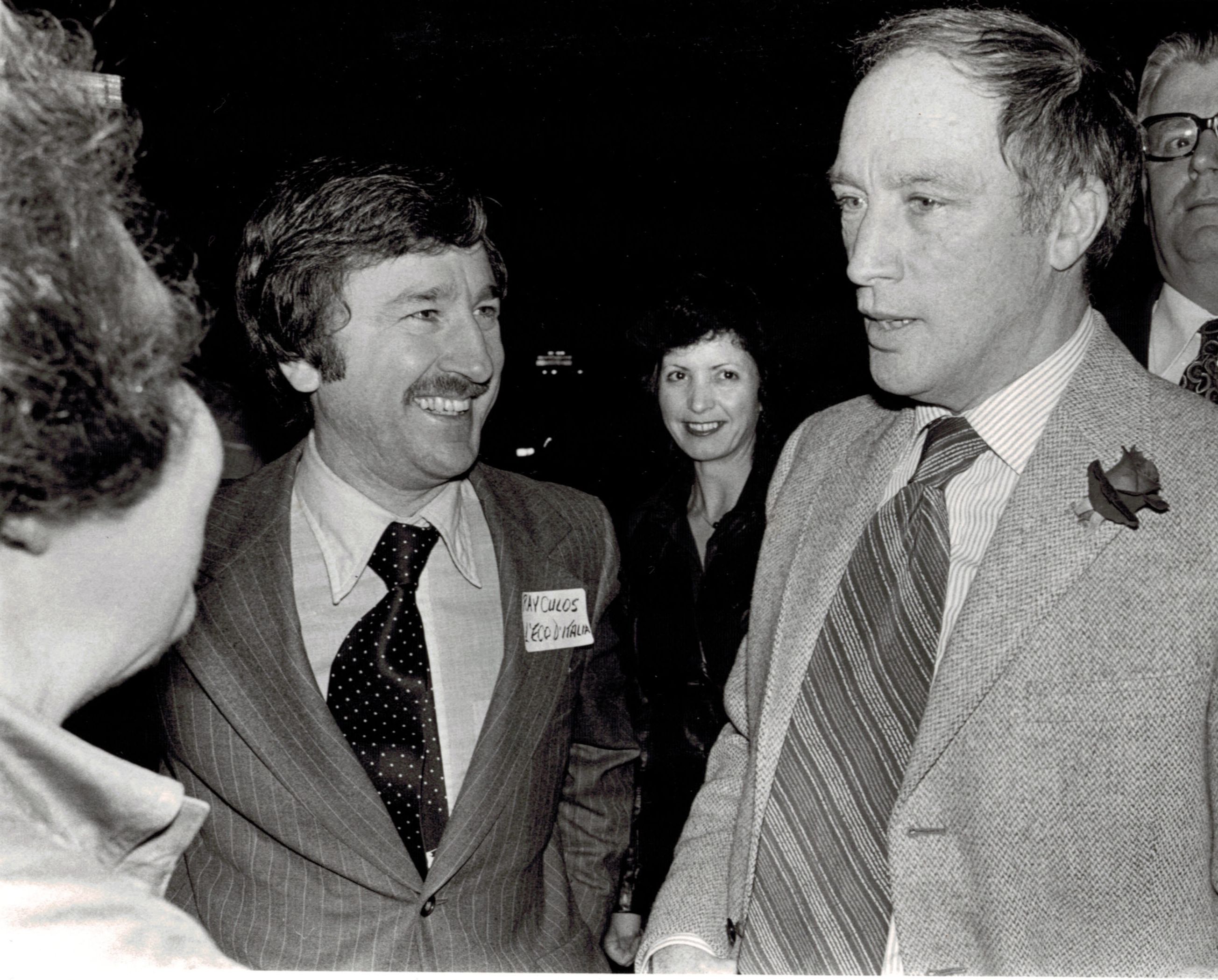
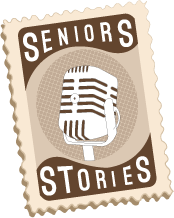



Leave a Reply